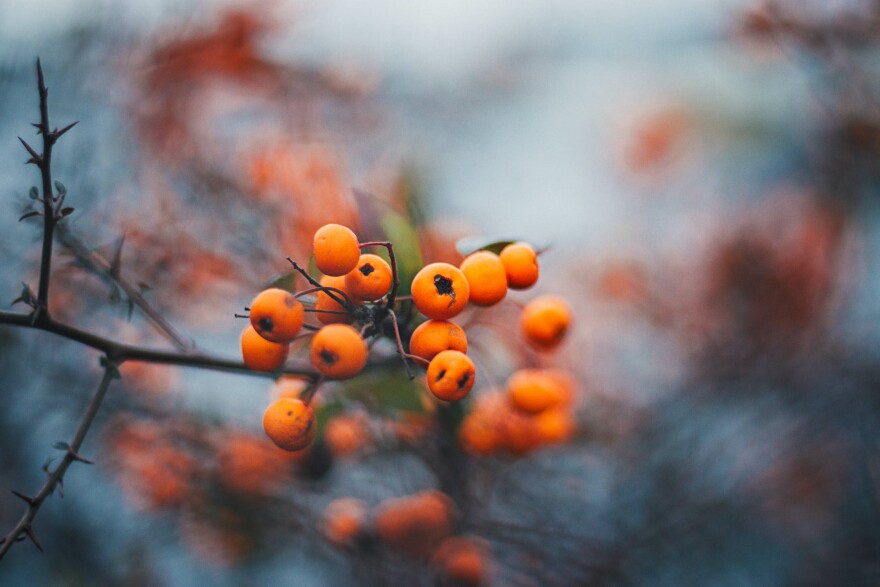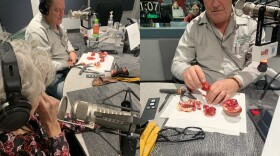When the soil is frozen solid in other parts of the country, our soil isn’t. Now there are times when the soil in our area is just so hard to dig that it might as well be frozen. But, once you get past that problem, you’ll be able to create a space where a fruit tree will thrive. When I say thrive, I mean - it’ll grow and produce fabulous fruit!
Planting fruit trees in mid to late winter gives them a chance to become acclimated to our environment before the stress of hot weather. They need a good root system to grow here, and planting in cool weather’s an important start for them.
There are so many different kinds of fruit to choose, and surprisingly enough, many of them’ll grow here in the Mojave! Assuming of course that you provide them with the basics. The soil’s the first thing. Our Mojave soils are tough, so when you dig a hole, make it at least three times as wide as the root ball. For instance, if you buy a tree in a pot that’s a foot across, you need to make the planting hole at least three feet across. But just as deep, not any deeper.
And make sure it has drainage. Lack of drainage – the #1 cause of plant death.
Mix the soil you removed with about the same amount of compost. That’s probably all the fertilizer you’ll need for the first couple of years.
Don’t forget about water. We only received 2.5 inches of rainfall in all of 2020, so irrigation’s critical, unless you’re prepared to stand outside with a hose for hour every day in July.
And you need to put the tree in a spot where it’ll get eight or more hours of sunlight daily.
I said there are so many different fruit trees to choose from, and there are only a couple of things to consider.
The first is, of course, what do you want to grow? Here in the desert we have some of the best tasting peaches anywhere, but I find that apples are a bit insipid – not enough cold weather to push up the flavor.
I’m a big proponent of growing things you can’t easily find in a supermarket. Why grow a red delicious apple when they’re 99 cents a pound?
On the other hand, an aprium is something you don’t see every day. That’s a cross between apricot and plum. And what’s even better, they’re self-fruitful; you don’t need another tree to pollinize it. If there’s another apricot tree in the neighborhood, you’ll get a larger crop.
Also, think about the size. If you have a little yard, or you’re growing in a pot, get a dwarf tree. Who wants to climb a ladder to pick a persimmon?
A couple of colleagues and I produced a special publication that I think’s a really useful guide. It’s based on years of trials we’ve done at the Center for Urban Water Conservation in North Las Vegas. It’s got a long title, “Research Orchard Fruit Evaluations & Recommendations for Southern Nevada”, but if you remember the number is SP-20-07, you should find it on the UNR Extension website. Or if you look under my name.
In this publication, we put general information on how to plant and grow fruit trees, and preventing pest infestation. Even more important, though, it covers a wide range of fruits, from almonds to quince, and many things in between. It describes the flavor, when to harvest, does it need a pollinizer. You’ll get recommendations for fruits that are Top Choice, Notable Mention, and some that are still Under Review. It even has a glossary at the end, just in case not everyone knows the difference between a pollinator and a pollinizer.
Of course, if you have a problem, call the Master Gardener Help Line. Not just with planting fruit trees, but almost any gardening issue you have.
So, decide what you want, look at the special pub and catalogs, and grow some delicious fruit!
Research Orchard Fruit Evaluations & Recommendations for Southern Nevada.
For KNPR’s Desert Bloom, this is Dr. Angela O’Callaghan of the University of Nevada Extension.






